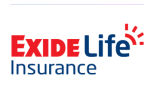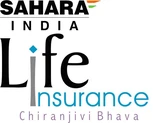

- Tax BenefitUp to 1,50,000**
- Claim SupportEveryday 10AM-7PM
- 45 Lacs+Happy Customers
*Standard Terms and Conditions Apply.
**Tax benefits are subject to changes in Income Tax Act.
Postal Life Insurance
In 1884, postal employees were able to purchase a new welfare/insurance policy exclusively designed to meet their needs. As the scheme grew, it was extended to cover personnel working in universities, state and central governments, public sector undertakings, government-aided universities, and defense forces staff.
Term Life Insurance Premium Calculator
Gender
- Male
- Female
Age
Do you smoke or chew tobacco?
- Yes
- No
Choose required coverage to secure your family’s future
How Does Postal Life Insurance work?
A high return on the premium is offered by the Postal Life Insurance Scheme. It offers up to Rs. 50 lakh as the maximum sum assured. There are various types of policies offered by the Government of India to employees of Public Sector Enterprises, State Governments, Government Aided Educational Institutions, Universities, Government aided educational institutions, Local Bodies, Cooperative Societies, Joint Ventures with at least 10% government or public sector stake, etc. As part of the Department of Posts group insurance program, Postal Life Insurance also covers Gramin Dak Sevaks, which are extra-departmental employees.
Features of Postal Life Insurance Policy
The postal life insurance policy was designed to help government servants and defence personnel cover costs in case of any unprecedented events in their lives. Over the years, the policy terms and conditions were revised to accommodate non-government employees into the scheme. There are several insurance policies framed to suit different insurance requirements. Following are the features of the Postal Whole Life Assurance (Suraksha) policy.
- Minimum & Maximum age at entry: 19-55 years
- Minimum Sum Assured ₹ 20,000; Maximum ₹ 50 lac
- Loan facility after 4 years
- Surrender after 3 years
- Not eligible for a bonus if surrendered before 5 years
- Can be converted into an Endowment Assurance Policy up to 59 years of age of the insurant provided the date of conversion does not fall within one year of the date of cessation of premium payment or date of maturity.
- Premium paying age can be opted for as 55,58 or 60 years
- A proportionate bonus on the reduced sum assured is paid if the policy is surrendered
- Last declared Bonus- ₹ 76/- per ₹ 1000 sum assured per year.
Benefits of Investing in Postal Life Insurance Schemes
Postal Life Insurance also offers the following discounts and benefits:
1. Section 88 of the Income Tax Act provides that the insured can avail of income tax exemption.
2. A lower premium is payable under this plan for coverage and the sum assured.
3. Besides assignment and loan options, the policy offers other options such as conversion, surrender, and a paid-up value option.
4. There is no additional charge to transfer the policy to any Circle within India.
5. In addition to tracking premium payments, access to the Passbook is available in the case of loan transactions, etc.
6. It is possible to pay the premium annually, half-yearly or monthly. The policyholder is legally entitled to make a payment on any working day when the payment is due.
7. 1% of the policy value can be saved by paying an advanced premium for 6 months.
8. A discount of 2% of the value of a policy can be obtained if you advance premium payments for a 12-month period.
9. Nominations can be made.
10. Claims are processed quickly and efficiently because of the centralized accounting system.
11. Government Backed Insurer: One of the major highlights of investing in postal life insurance schemes is the guarantee of a payout. Since the Indian Postal Service is managed directly by the central government, insurance benefits and payouts are guaranteed to policyholders.
12. Affordable Premium Payment Options: Since these are government-backed insurance schemes, the premium rates are decided keeping in mind people from all kinds of income-groups.
13. Flexible Payment Options: Policyholders can opt for several types of premium payment schedules - monthly, quarterly, half-yearly or annually, depending on their financial situation.
14. Tax Benefits: PLI investments are eligible for tax deductions under Section 80 C of the Income Tax Act.
15. Loan Option: Policyholders can borrow loans against their PLI policy after 3 years of beginning their policy term. This allows individuals to cater for any financial emergency that may occur during their policy term.
Which Is Better? Postal Life Insurance or Term Insurance?
PLI offers a myriad of benefits as compared to term life insurance, however, it is open to only select sections like government employees and certain professionals. The following table details the most evident differences between the two.
|
Feature |
Postal Life Insurance |
Term Insurance |
|
Run By |
Managed by the Indian Postal Service |
Private Insurance Companies |
|
Eligibility |
Limited to specific government employees and professionals |
Open to all citizens |
|
Policy Types |
Traditional plans only |
Pure protection plans |
|
Coverage Duration |
Not specified (varies by plan) |
1 year to several decades (up to 40 years) |
|
Maximum Sum Assured |
₹50 lakh |
No upper limit |
|
Minimum Sum Assured |
INR 20,000 |
Varies by insurer |
|
Premium Rate |
Generally lower than that of private insurers |
Lower than private life insurance premiums |
|
Age Limit |
19 years to 55 years (Varies depending on the type of PLI) |
Upto 75 years (this is subject to change depending on the insurer) |
|
Bonus Rates |
Eligible for 7% bonus after 5 years lock-in period. |
None |
|
Maturity Benefits |
Yes, for certain plans, policyholders can convert their sum assured into another insurance policy. |
Only in case of the unfortunate event of a policyholder’s death. Upon survival, one may opt to convert the policy or renew the term insurance. |
The above table explains the different factors one must look at before deciding between postal life insurance and private term insurance. Although the benefits offered by PLI are more, one must carefully read their eligibility criteria before making a decision.
Scheme Which Comes Under Postal Life Insurance
Below mentioned are schemes which come under postal life insurance:
1. Whole Life Assurance (Suraksha)
If the policy is still in effect at the time of claim, the insured is paid the amount insured along with accrued bonuses upon reaching age 80, or upon death, whichever comes first.
2. Convertible Whole Life Assurance (Suvidha)
At the end of five years after taking the insurance policy, the policy can be converted into an endowment policy.
3. Endowment Assurance (Santosh)
In this scheme, the proponent will be guaranteed a sum assured, plus any accrued bonus, until they have reached the predetermined maturity age, which is 35,40,45,50,55,58 & 60.
4. Joint Life Assurance (Yugal Suraksha)
One spouse should be eligible for a PLI policy under a Joint Life Endowment Assurance.
5. Anticipated Endowment Assurance (Sumangal)
This policy provides a maximum sum assured of 50 lacs, and is best suited for people who need periodic returns. A periodic death benefit is paid to the insured. An unexpected death of the insured does not take such payments into account. As a result, the assignee, nominee, or legal heir is entitled to the full sum assured with accrued bonus.
5. Children Policy (Bal Jeevan Bima)
This scheme has the following salient features:
- Children of policyholders are covered by the scheme
- Each policyholder's (parent) two children are eligible
- The age range for children participating in the program is 5- 20 years old whichever is less, the sum assured of the parent or three lacs, whichever is greater,
- Neither the policyholder nor the policyholder's parent should be older than 45 years old.
- The Children Policy does not require a premium to be paid upon the death of the policyholder (parent). After the policy term has ended, the full sum assured and accrued bonus will be paid.




























